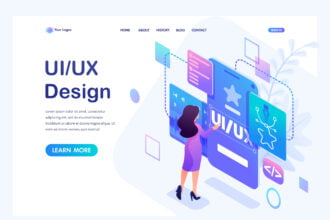We have talked about the benefits of using big data in web design. One of the most important benefits of data analytics is improving user experience.
Jenny Booth highlighted this in her post Data-informed design: Getting started with UX analytics. We wanted to cover this topic in more depth.
Big Data is Crucial for Improving Online User Experience
Companies that use data technology strategically are able to significantly boost their overall conversion rates. One of the most important reasons is that they can use data from their users to see how they respond to various webpage elements. This allows them to take a data-driven web optimization approach for better user engagement.
Users are the lifeblood of any website. The more the end-users enjoy your site, the more likely they will return and recommend it to others. If you want to keep your leads coming back again and again, you need to make sure that each visit is as engaging as possible. This is where data-driven customer engagement strategies comes into play.
Your website might be the most aesthetically arranged piece of code on the block, but that won’t mean much if it isn’t well-designed. Good web design means that every element of your web presence—from content strategy and usability testing to design conception and development—should consider target demographic and user experience. You need to take all of this into consideration when using big data in your web design approach.
Implementing even one of these methods can lead to fundamental changes in how customers interact with your brand. Here are six tips for designing a web presence that does more than just load code.
Consult a conversion optimization agency with a focus on data analytics
If you’re not already working with an agency that has experience optimizing the customer journey for conversions, then now is a great time to explore hiring one. You need to make sure that this company has a background in data analytics and knows how to use it in their design process.
By taking advantage of relevant big data tools and methods during the design process, you can ensure you’re directing users down an efficient path toward conversion without wasting their time clicking in circles around your site. In addition, using a conversion optimization agency like Ampry can help provide insight into how users use your site, arming you with valuable data for any future development projects.
Conduct A/B testing
Another way to increase conversions is with A/B testing. This is one of the biggest benefits of data analytics. This website design and optimization method involves running two different versions of the same page against each other and then measuring which one converts more users into leads or sales.
While you’ll need to hire a web development company for this one, it does show just how vital user experience can be. If you don’t get it right on the front end, then there’s no point in worrying about how well your site converts visitors when they arrive at the home page.
Leverage persuasive storytelling
The most effective marketing campaigns tell a story, and this rule applies to websites as well. These stories don’t necessarily have fictional villains and plots with characters like novels or films, but rather real-life narratives about people who have benefitted from using a particular product or service. A narrative engages users and draws them in while also allowing you to demonstrate your value proposition.
You can use data analytics for this process as well. There are a lot of online advertising spy tools that allow you to mine data from other advertisers to see what types of storytelling approaches work for them, so you can replicate them yourself.
Make it personal, make it human
Creating a website that feels like it’s part of a larger community can also boost conversions. This personalization is something that isn’t easy for every company. Still, if you have the resources to implement this approach onto your site, then you’ll be rewarded with increased engagement among users and repeat visits.
Just remember to keep the human element front and center at all times. Suppose visitors feel like they are speaking directly with an actual person rather than just another money-hungry business entity. In that case, consumers are more likely to form emotional connections with your brand and align with your values.
Simplify forms and pages
Forms and landing pages are some of the most critical components of user experience on any website. That’s why it’s essential to keep these pages as simple as possible to encourage users to move through the conversion funnel more quickly.
Using minimal entry fields is one way to do this, but another is by personalizing these requests with information users have already provided through social media integrations. This is one of the areas where AI tools can help with the design process. You can even use AI and data design technology to make sure the forms are sized according to the user device and integrate other personalization factors.
Focusing on the user journey
Despite what some might say, a website is not all about the home page. Your homepage is just one small piece of the puzzle that unfolds as users move throughout your site–think of your homepage as the welcome mat and foyer of your business’s home. First impressions are essential, but that doesn’t mean you should put the cart before the horse when designing your page.
Suppose you’re able to map out exactly how each page contributes to or affects other parts of this journey. In that case, you’ll better understand your users and their needs, which means more opportunities for conversion optimization and higher conversions overall.
This is the biggest benefit of data analytics. You can use tools like Google Analytics to map their journey and optimize accordingly.
Data Technology is Invaluable for UX Optimization
Consumers are spoiled for choice in today’s e-commerce market, but that doesn’t mean you can’t be a cut above the rest. By integrating data-driven design principles and prioritizing user experience, you can convert your leads into sales with the best of them.











